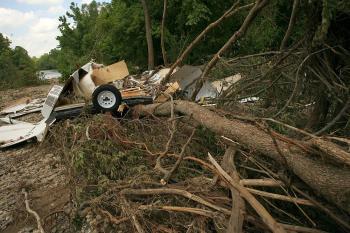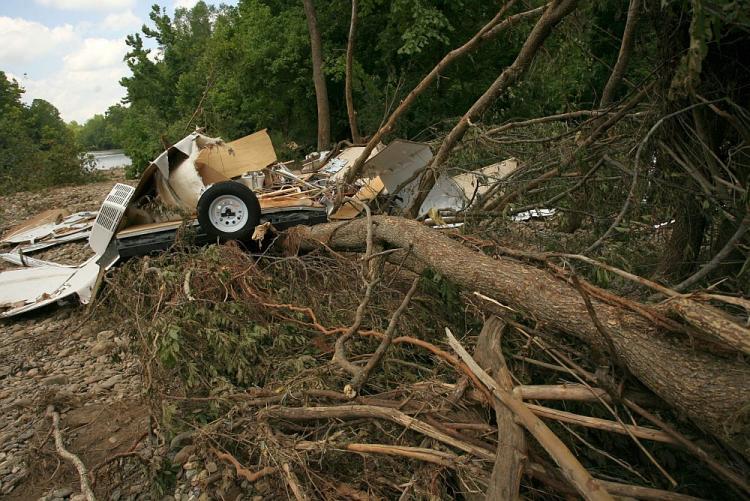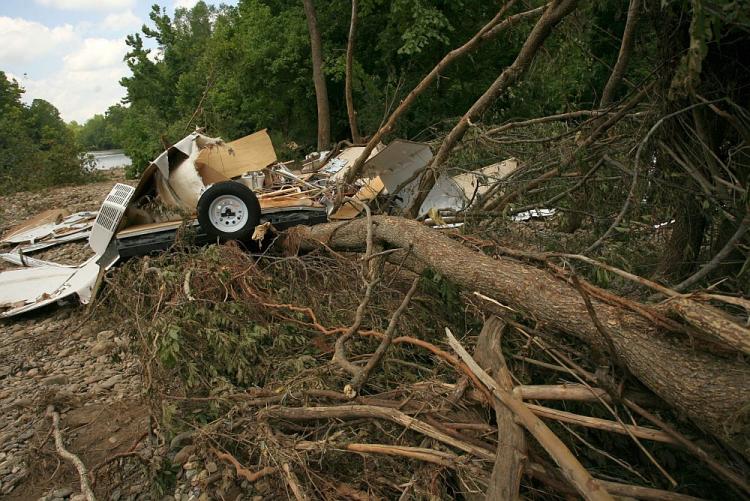On the evening of June 11, a strong storm caused the Little Missouri River in southwest Arkansas to rise from less than 4 feet deep, to an estimated depth of over 23 feet. A wall of water poured through the Albert Pike campground at 3 a.m. while campers were asleep.
A report about the devastating flash flood, which killed 20 people, was recently released by the USDA Forest Service. The agency will develop an action plan to protect park visitors by Nov. 30, 2010.
Agriculture Secretary Tom Vilsak called for the report after touring the devastated area with Arkansas officials and Forest Service Chief Tom Tidwell only a few hours after the water receded. When Vilsak announced the report, he said it would serve to “prevent similar tragedies in the future.”
The Forest Service report builds upon information contained in a USDA analysis examining the events at Albert Pike campground immediately after the storm. The report commits the Forest Service to an increase in accountability, oversight, and monitoring of public safety issues nationwide and recommends that the agency implement a comprehensive safety communication strategy so visitors can make safer decisions about their recreation activities.
The report specifies ways to improve the emergency response and evacuation plans at individual facilities. Employees and volunteers at these facilities will also receive more training on visitor safety.
“The best way to honor the victims is to redouble our efforts to provide the safest facilities possible in Arkansas and across the country,” said Tom Tidwell, chief of the Forest Service in a statement.
“Because of this tragedy, we initiated actions nationally to improve communication of safety messages to visitors, to increase training our own employees regarding visitor safety, and to evaluate early warning systems and their applicability in the agency,” he said.
A hydrologist at the U.S. Geological Survey estimated the flash flood as a 500-year event. Although such an event is extremely rare, the Forest Service says it has done a thorough review and is taking steps to reduce the chances of such a loss of lives in the future.
A report about the devastating flash flood, which killed 20 people, was recently released by the USDA Forest Service. The agency will develop an action plan to protect park visitors by Nov. 30, 2010.
Agriculture Secretary Tom Vilsak called for the report after touring the devastated area with Arkansas officials and Forest Service Chief Tom Tidwell only a few hours after the water receded. When Vilsak announced the report, he said it would serve to “prevent similar tragedies in the future.”
The Forest Service report builds upon information contained in a USDA analysis examining the events at Albert Pike campground immediately after the storm. The report commits the Forest Service to an increase in accountability, oversight, and monitoring of public safety issues nationwide and recommends that the agency implement a comprehensive safety communication strategy so visitors can make safer decisions about their recreation activities.
The report specifies ways to improve the emergency response and evacuation plans at individual facilities. Employees and volunteers at these facilities will also receive more training on visitor safety.
“The best way to honor the victims is to redouble our efforts to provide the safest facilities possible in Arkansas and across the country,” said Tom Tidwell, chief of the Forest Service in a statement.
“Because of this tragedy, we initiated actions nationally to improve communication of safety messages to visitors, to increase training our own employees regarding visitor safety, and to evaluate early warning systems and their applicability in the agency,” he said.
A hydrologist at the U.S. Geological Survey estimated the flash flood as a 500-year event. Although such an event is extremely rare, the Forest Service says it has done a thorough review and is taking steps to reduce the chances of such a loss of lives in the future.







